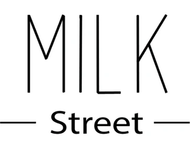October is Down Syndrome Awareness Month, a chance to spread awareness. During the month of October, we will celebrate people with Down syndrome and make people aware of their abilities and accomplishments. It’s not about celebrating disabilities, it’s about celebrating abilities!
For this post, we wanted to take a moment and highlight Beckham and his family! Beckham's mom runs a blog sharing the ups and downs of raising a child with Down syndrome, and just life in general.

You can check her blog out here.
We are excited that part of our Milk Street team is going to meet Beckham and his family this month. His story is one that we cannot wait to highlight more!
Until then, here are 10 facts about Down Syndrome!
1. Down syndrome Occurs in Approximately One in 700 Births
DS is the most common chromosomal condition diagnosed in the United States. Around 6,000 babies — or one in 700 — are born with DS every year.
2. There are Three Types of Down Syndrome
- Trisomy 21: In 95% of cases, babies born with DS have one extra copy of chromosome 21, giving them three total.
- Translocation: In 3% of cases, a partial or whole chromosome is attached (translocated) to a different chromosome rather than being a separate chromosome 21.
- Mosaic: In about 2% of cases, some of the person’s cells have three copies of chromosome 21, but other cells have two copies. Children with mosaic Down syndrome have fewer characteristics of Down syndrome.
3. Down Syndrome Has Been Depicted in Historical Paintings From the 15th and 16th Centuries
Down syndrome is not new — in fact, the first evidence of its existence dates back 2,500 years. The facial features of DS are found in some ancient pottery and paintings. The syndrome is named after John Langdon Down, an English doctor who published a clinical description in 1866.
4. Prenatal Screening For Down Syndrome is Available
Doctors use maternal blood samples and ultrasound to detect DS in the early stages of pregnancy. Since the condition is more likely in pregnant women age 35 and older, screening tests are commonly recommended for that age group.
During the prenatal months is when Kensley found out about Beckham having DS! Read her post about getting personal to find out more details on that!
5. Other Health Problems Can Occur With Down Syndrome.
While Down syndrome affects every person differently, people with DS are at a higher risk for certain health issues. Hearing problems, eye issues, and ear infections are common, as are congenital heart defects. In adulthood, potential health problems include sleep apnea, thyroid disease, and earlier onset of Alzheimer disease.
6. While Every Person With Down Syndrome is Different, Some Characteristics Are Common.
- Delays in development
- Hypotonia (low muscle tone)
- Almond-shaped eyes
- A flat nasal bridge
- A short neck
- Small ears
- A small chin
- Small feet and hands with short fingers.
- Shorter height
7. There Are Health Care Guidelines in Place to Guide Primary Care Providers to Effectively Care for People With DS
The American Academy of Pediatrics has developed health care guidelines to help health care professionals and families provide proper preventive care. By following these guidelines, many medical conditions can be treated early or even prevented.
8. The Family & Personal Impact of Having A Child With Down Syndrome Is Overwhelmingly Positive
Studies on the impact of DS on families show that 98% of parents did not regret having a child with Down syndrome, while 96% of siblings wouldn’t trade their sibling with DS for the world. And 99.9% of people with Down syndrome say that they are happy with their life.
After all, it's just one extra chromosome!
9. The Life Expectancy For People Living With Down Syndrome Continues To Increase
In the 1960s, the average life expectancy for children with DS was age 10. Today, that number is age 60 and higher, thanks to new therapies and medical care that improve quality of life for people with DS.
10. People With DS Are Living High Quality and Amazing Lives!
Thanks to appropriate medical care, supportive therapists, and education options. People with DS benefit from medical care options that were not available years ago. From speech therapy, physical therapy, and occupational therapy to inclusive educational environments, people with DS have more opportunities than ever before.

Be sure to check out Kensley's instagram to see more pictures of sweet Beckham!
Thanks so much for reading,
Kate


